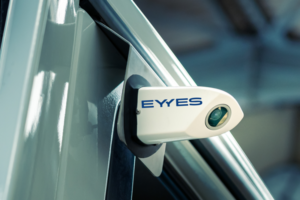Published: 7th March 2023
The Direct Vision Standard (DVS) was the first legislation to require safety permits for HGVs in Greater London. The legislation, which was due to be implemented in October 2020, but delayed until March 2021, aims to reduce fatal collisions where vision is cited as a contributing factor. Since being enforced, DVS has made a dramatic contribution to the safety of vulnerable road users.
Transport for London (TfL) has been reviewing the DVS Progressive Safe System (PSS), and the DVS consultation opened on Wednesday 15th February 2023. The consultation will run until 3rd April 2023. The final PSS requirements will be published in June 2023 following approval from the London Council’s Transport and Environment Committee. The resulting changes will be implemented in October 2024.
DVS permits are issued based on the star rating of each vehicle. For those vehicles which do not meet the minimum standard, the DVS Safe System must be retrofitted in order to qualify for a permit. Currently, this only applies to vehicles with a 0 star rating. However, from October 2024 this will change, and vehicles with 1 and 2 star ratings will also need to comply with the DVS Safe System requirements.
SM UK and Brigade’s DVS Safe System kit has been a significant contribution to DVS compliance. Provided in one versatile package, Brigade’s Safe System kit consists of a full range of vehicle safety solutions that improve a driver’s direct vision from a vehicle’s cab and meet the standards as set out in the Safe System specification.
The consultation is currently proposing three major changes to the current DVS requirements, including:

No false activations of rigid vehicle sensors
Sensors must not activate in relation to roadside furniture or stationary vehicles.
Brigade’s Sidescan®Predict is a ground-breaking side-detection sensor system. Launched in 2021, the system uses ultrasonic technology to analyse data and calculate the risk of an impact, instantly alerting drivers to potential dangers.
Sidescan®Predict reduces false alarms and increases the accuracy of the warning by differentiating between static objects, such as road furniture, and moving objects, like people and cyclists. The system is in constant operation below speeds of 20mph and does not need indicator selection to be activated.
Full-coverage sensors to be fitted on articulated vehicles
 The second significant proposal is to the London Lorry Control Scheme, which will require sensors to be fitted on articulated vehicles. It is proposed that these sensor systems must ensure full coverage of the nearside of the tractor unit and semi-trailer.
The second significant proposal is to the London Lorry Control Scheme, which will require sensors to be fitted on articulated vehicles. It is proposed that these sensor systems must ensure full coverage of the nearside of the tractor unit and semi-trailer.
Brigade’s new side radar detection system will be launched at the Commercial Vehicle Show. The predictive system can detect whether the vehicle has a trailer and will only warn the driver if a collision is likely via a visual display in the cab. Side radar will detect the truck turning, so indicator selection is not required to activate the system. Installation is quick and takes approximately two hours, meaning less vehicle downtime for operators.
Front-detection system or Moving Off Information System (MOIS)

The third major change suggested in the consultation documents is for a front-detection system or Moving Off Information System (MOIS). Front end collisions with people occur due to lack of direct vision from the driver’s seat, especially when the vehicle is moving from a standstill or manoeuvring at low speeds in urban traffic.
CAREYE® is a premium AI camera that is also predictive. The system will accurately evaluate images via cameras fitted to the vehicle and can calculate the future course of motion of nearby people or objects located at the nearside of a vehicle. Using this data, the system reliably and accurately warns the driver in real time of a possible collision before it occurs.
Warnings are issued either actively with an audible and visual red alert if a person or object is at risk of being hit, or passively via a visual yellow alert if, for example, a person or object is moving away from the danger zone. This predictive technology dramatically reduces false alerts.
Get in touch with SM UK for more information on DVS compliance or check out our website on many other compliance solutions.